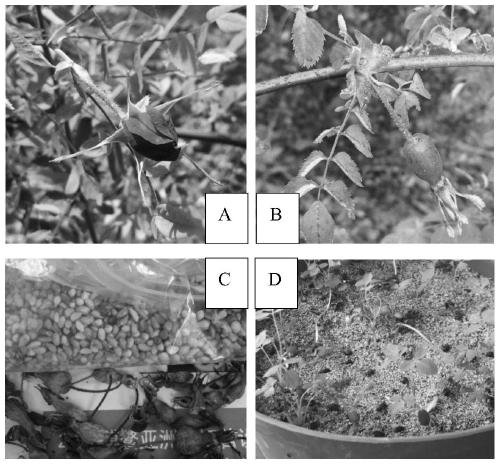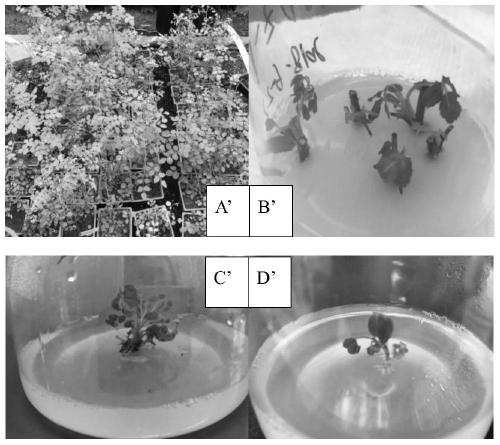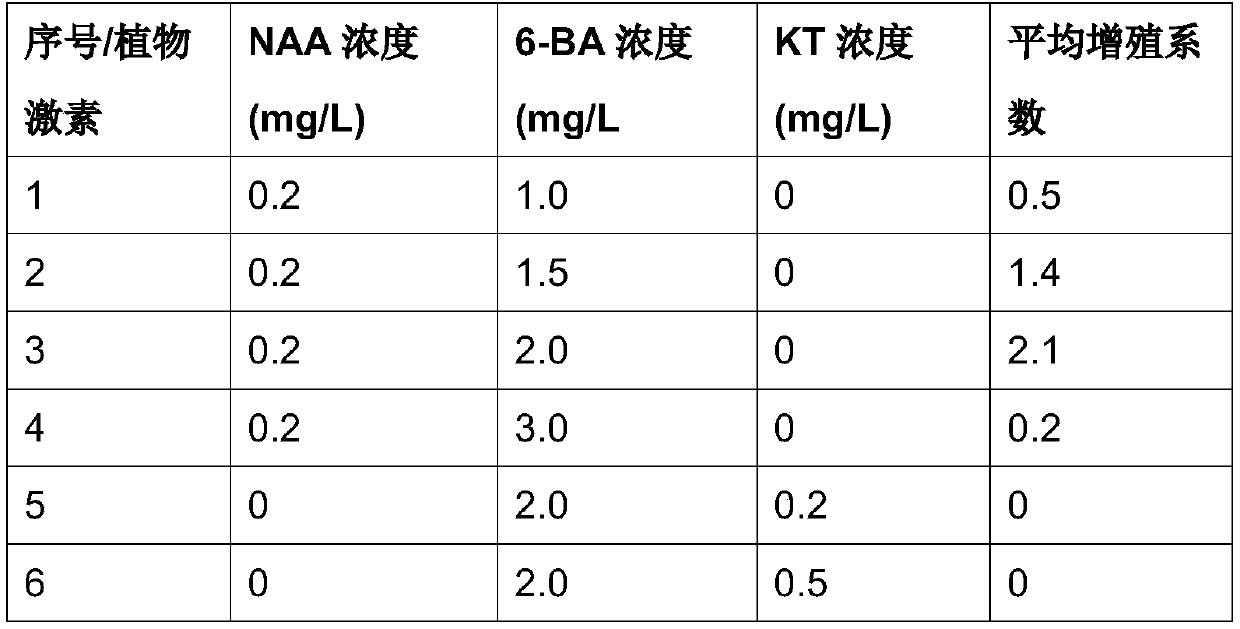Tissue culture method of rosa graciliflora
A technique of tissue culture and rose, which is applied in the field of plant cultivation and plant tissue culture, can solve the problems of few reports of wild rose seed germination, no seed germination and tissue culture research reports, etc., to achieve a large number of rapid propagation and good application Foreground, effect of high seed emergence
- Summary
- Abstract
- Description
- Claims
- Application Information
AI Technical Summary
Problems solved by technology
Method used
Image
Examples
Embodiment 1
[0037] Embodiment 1 Seed Germination Treatment
[0038] wild rosebush flowers figure 1 Shown in A, in November, ripe thin stem rose fruit (such as figure 1 B) pick it off, cut out the seeds in time and clean them up, and dry them for later use (such as figure 1 C), then mix the seeds and wet sand evenly in a volume ratio of 1:5, keep the humidity at 70% to 80%, and perform low-temperature sand storage (low-temperature stratification) treatment at 5°C. In September of the following year, the seeds stored in the sand were taken out for sowing. The substrate was peat: perlite = 3:1 (volume ratio), the pot soil was kept moist, and normal cultivation and management were carried out after emergence. 1 month after sowing, the seedling emergence rate was 35% (such as figure 1 D).
[0039] Seed germination rates of different low-temperature sand storage time treatments are shown in Table 1.
[0040] Table 1 Effect of different low temperature stratification time on seed germinatio...
Embodiment 2
[0043]Embodiment 2 stem segment tissue culture
[0044] (1) Disinfection of explants
[0045] Processed according to the method of embodiment 1, after germination and seedling growth one year (cultivated plants such as figure 2 A'), get the well-grown annual stem section of Rosa spp., remove the leaves and petioles, and rinse under running water for 30 minutes. Cut off a 2-3cm stem section containing a nodule (stem node), soak and disinfect with 70% ethanol for 30s, rinse with sterile water for 3 to 4 times; then use 10% sodium hypochlorite containing about 0.1% (wt) Tween 20 The solution (available chlorine is about 1%) is disinfected for 10 minutes, rinsed with sterile water for 3 to 4 times; sterilized with 0.05% mercuric chloride for 5 minutes, and rinsed with sterile water for 3 to 4 times.
[0046] (2) Axillary bud induction
[0047] Inoculate the sterilized thin-stemmed rose stems vertically upward into the primary medium, 5 stems per bottle, and put them in an incu...
PUM
 Login to View More
Login to View More Abstract
Description
Claims
Application Information
 Login to View More
Login to View More - R&D
- Intellectual Property
- Life Sciences
- Materials
- Tech Scout
- Unparalleled Data Quality
- Higher Quality Content
- 60% Fewer Hallucinations
Browse by: Latest US Patents, China's latest patents, Technical Efficacy Thesaurus, Application Domain, Technology Topic, Popular Technical Reports.
© 2025 PatSnap. All rights reserved.Legal|Privacy policy|Modern Slavery Act Transparency Statement|Sitemap|About US| Contact US: help@patsnap.com



